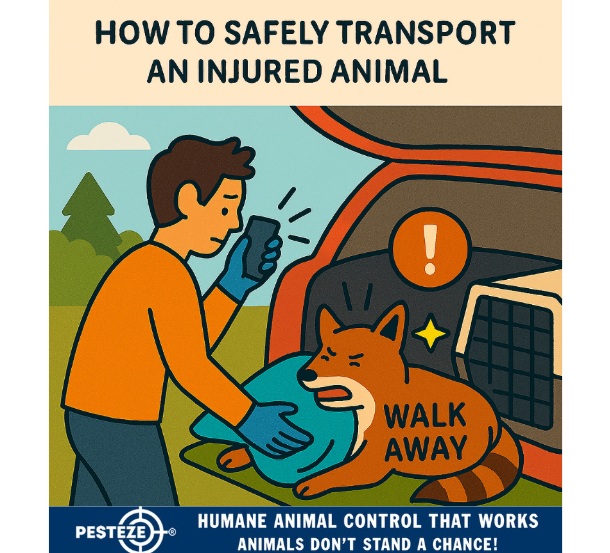HOW TO SAFELY TRANSPORT AN INJURED ANIMAL

HOW TO SAFELY TRANSPORT AN INJURED ANIMAL
SUMMARY
Transporting an injured animal requires care, caution, and quick thinking. Whether you find a wounded pet, wild animal, or stray, your actions can make a life-saving difference. This guide outlines safe, humane, and legally sound steps to move an injured animal to a veterinary clinic or wildlife rehabilitator. With the right approach, you’ll minimize stress and prevent further harm while ensuring the animal gets the help it needs.
FEATURES
-
Assess the Situation First: Determine if the animal is stable enough to be moved.
-
Use Protective Gear: Wear gloves and long sleeves to avoid bites, scratches, or disease exposure.
-
Choose the Right Container: Select a secure box, crate, or carrier with ventilation.
-
Minimize Movement and Noise: Keep the environment calm to reduce stress and shock.
-
Avoid Feeding or Watering: Learn why offering food or water can be dangerous during transport.
-
Contact Professionals Immediately: Notify a vet or wildlife expert before and during transport.
GUIDE DESCRIPTION
Finding an injured animal can be overwhelming, but knowing how to transport it safely is crucial. Whether it’s a wild creature hit by a car or a domestic pet in distress, your response must prioritize safety—for both you and the animal.
Begin by assessing the situation. Observe from a distance to determine the animal’s condition. If it’s conscious but immobile, bleeding, or showing signs of trauma, it may need urgent care. However, if the animal is aggressive or in a dangerous location, call professionals before attempting to intervene.
Always use protective gear. Gloves, long sleeves, and closed-toe shoes help protect you from bites, scratches, or zoonotic diseases. Injured animals are often scared and may lash out even if they’re normally docile.
Choose a suitable container. A sturdy box, pet carrier, or crate lined with a towel or blanket provides comfort and containment. Ensure the container has ventilation and is secure enough to prevent escape.
Keep the environment quiet and stable. Avoid loud noises, sudden movements, or excessive handling. Speak softly and drive carefully to prevent jostling or worsening injuries.
Do not offer food or water unless instructed by a veterinarian. Injured animals may choke, aspirate, or suffer digestive complications if fed prematurely.
Contact a vet, animal shelter, or wildlife rehabilitator as soon as possible. Let them know you’re en route and provide details about the animal’s condition. They can prepare for immediate care and guide you through any legal or procedural requirements.
By following these steps, you’ll ensure the injured animal receives timely, compassionate care while protecting yourself and others involved.
- Amy Chang


Comments 0